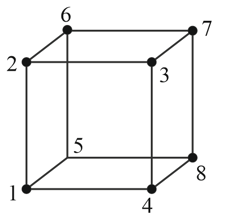A cylindrical layer of dielectric with permittivity, is inserted into a cylindrical capacitor to fill up all the space between the electrodes. The mean radius of the electrodes equals , the gap between them is equal to , with . The constant voltage is applied across the electrodes of the capacitor. Find the magnitude of the electric force pulling the dielectric into the capacitor.

Important Questions on ELECTRODYNAMICS
A capacitor consists of two stationary plates shaped as a semi-circle of radius , and a movable plate made of a dielectric with permittivity , and capable of rotating about an axis between the stationary plates (figure). The thickness of the movable plate is equal to , which is practically the separation between the stationary plates. A potential difference is applied to the capacitor. Find the magnitude of the moment of forces relative to the axis , acting on the movable plate in the position shown in the figure.

(a) in series;
(b) in parallel.
Find the resistance of a wire frame shaped as a cube (figure) when measured between points:
(a) ; (b) ; (c) . The resistance of each edge of the frame is .

At what value of the resistance , in the circuit shown in the figure, will the total resistance between points and be independent of the number of cells?

Figure shows an infinite circuit formed by the repetition of the same link, consisting of resistances and . Find the resistance of this circuit between points and .

The gap between the plates of a parallel-plate capacitor is filled with glass of resistivity . The capacitance of the capacitor equals . Find the leakage current of the capacitor, when a voltage is applied to it. (Permittivity of vacuum, , Dielectric constant for glass )
